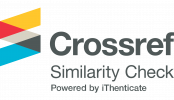Plagiarism Policy

Journal Chemical and Biochemical Engineering Quarterly uses the CrossRef Similarity Check (powered by iThenticate) software to detect instances of overlapping and similar text in submitted manuscripts. Wherever you see Crossref Similarity Check logo, you can be reassured that the publisher whose content you are reading is committed to actively combating plagiarism and publishing original research. To find out more about Similarity Check visit: http://www.crossref.org/similaritycheck.html
Editorial Office checks all submitted content through CrossRef Similarity Check software. It generates a similarity report, highlighting the percentage of overlap between the uploaded article and the published material. Any instance of content overlap is further scrutinized for suspected plagiarism according to the publisher’s Editorial Policies. Journal Chemical and Biochemical Engineering Quarterly allows an overall similarity of 20% for a manuscript to be considered for publication. The similarity percentage is further checked by taking into account the following important points:
Low Text Similarity
The text of every submitted manuscript is checked using the Content Tracking mode in iThenticate. The Content Tracking mode ensures that manuscripts with an overall low percentage similarity (but which may have a higher similarity from a single source) are not overlooked. The acceptable limit for similarity of text from a single source is 5%. If the similarity level is above 5%, the manuscript is returned to the author for paraphrasing the text and citing the original source of the copied material.
It is important to mention that the text taken from different sources with an overall low similarity percentage will be considered as a plagiarized content if the majority of the article is a combination of copied material.
High Text Similarity
There may be some manuscripts with an overall low similarity percentage, but a higher percentage from a single source. A manuscript may have less than 20% overall similarity but there may be 15% of similar text taken from a single article. The similarity index in such cases is higher than the approved limit for a single source. Authors are advised to thoroughly rephrase such similar text and properly cite the original source to avoid plagiarism and copyright violation.
In case the editorial office and/or reviewers determine that completely non-original (plagiarised) paper has been submitted, that paper is immediately excluded from the editorial evaluation process and authors are losing the possibility of future submission and publication in the journal.



